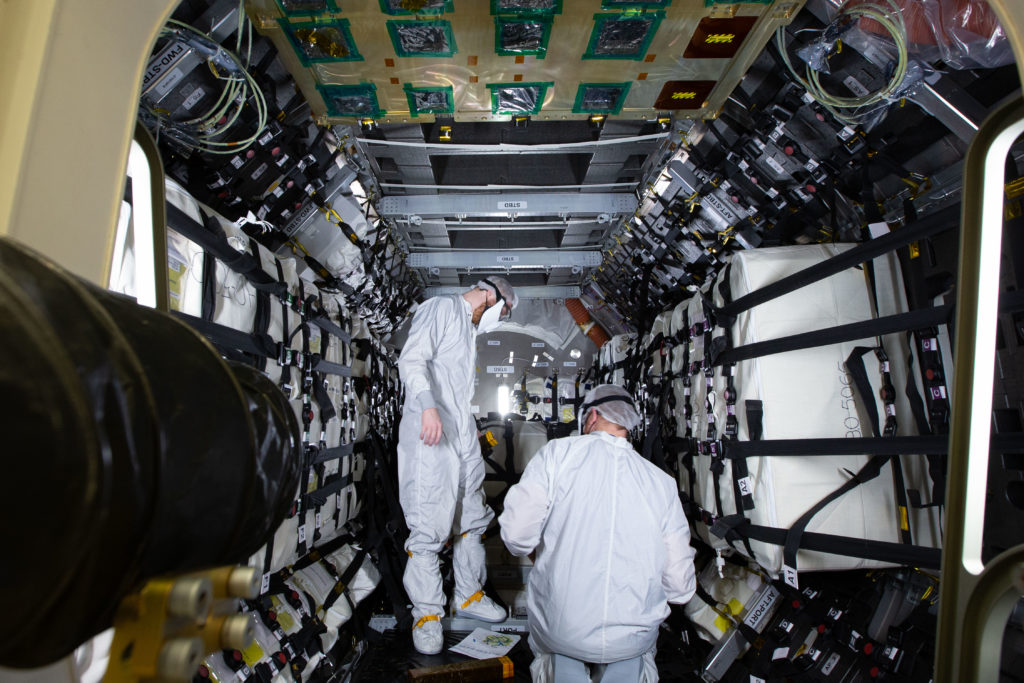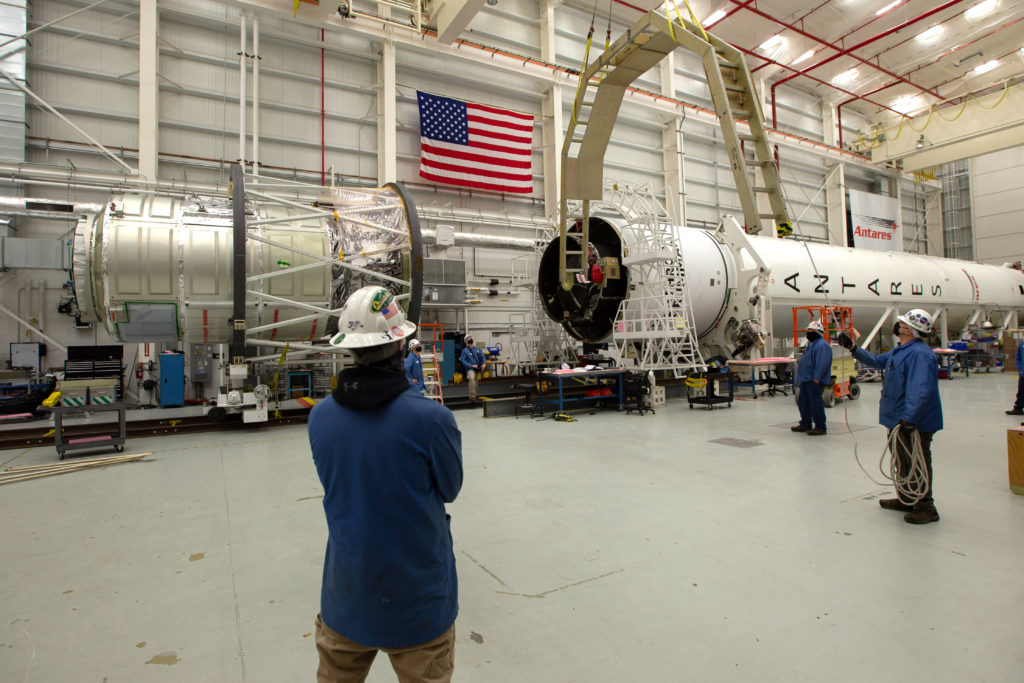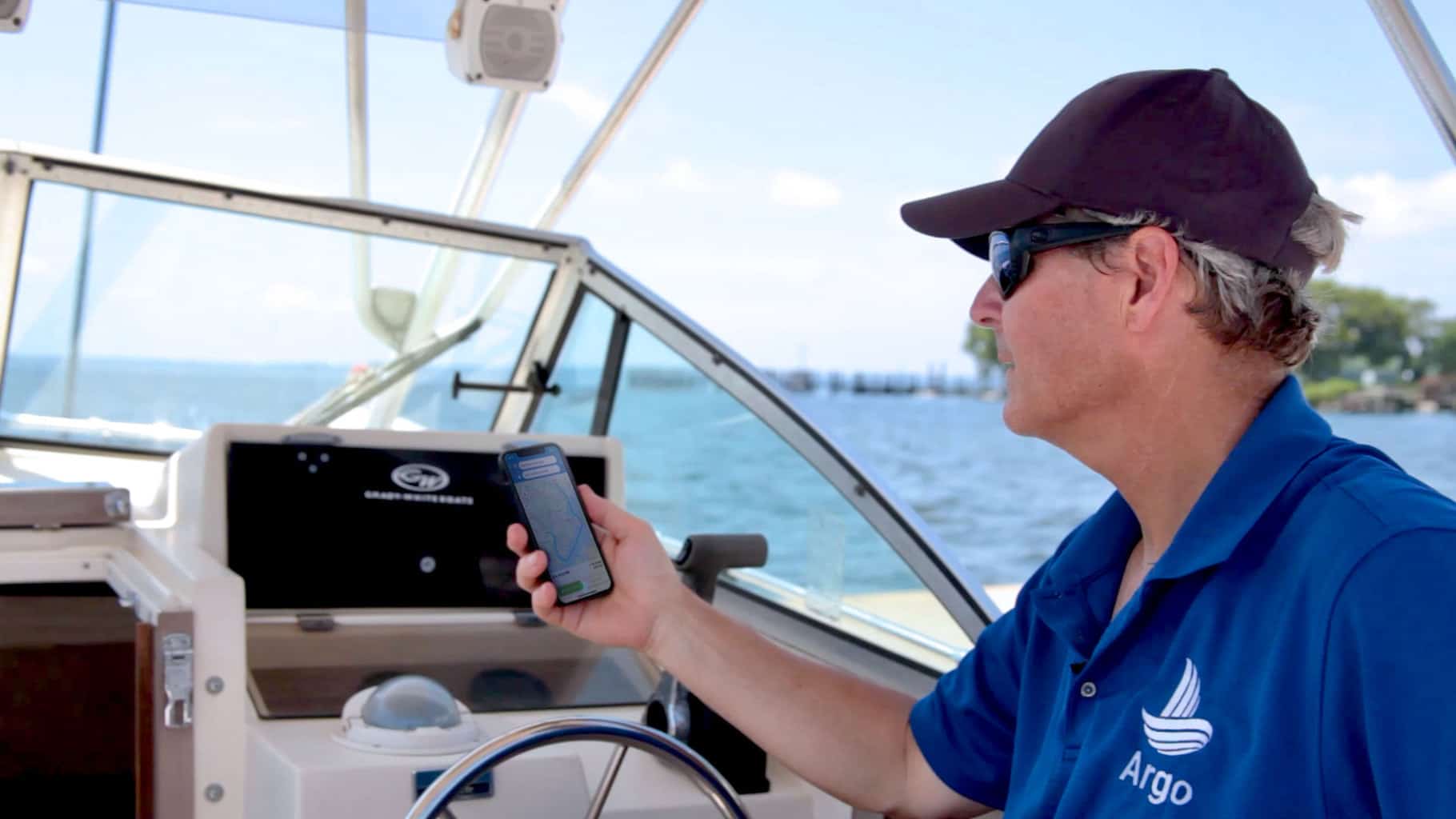Seeing what’s up at Wallops Island
While billionaires dabble in the delights of space flight, the day-to-day business of rocketry carries on at a flyspeck island off the Delmarva Peninsula. Squeezed between the Atlantic and marshy coastal lagoons south of the Maryland-Virginia border, Wallops Island once held wild horses, domestic livestock, and hungry mosquitos. Today it’s home to the only launch range owned and operated by the National Aeronautics and Space Administration.
Over the years, unsung Wallops Island Flight Facility has made NASA history and provided residents of the mid-Atlantic with close encounters of the space-flight kind typically reserved for Floridians and Sunshine State tourists.
Wallops launched its first rocket in 1945—five years before Cape Canaveral did—making it the oldest U.S. missile range in continuous operation. Fifteen years later it conducted early space capsule safety tests for NASA’s first manned mission, Project Mercury.
Rockets launched from Wallops Island have lit up the East Coast skies, dazzling—and occasionally alarming—onlookers for decades. During a total solar eclipse in 1970, Wallops launched more than 30 rockets in a 24-hour period to study the eclipse as it passed overhead. Suborbital research flights from Wallops, including one just last year, have emitted eerily colored vapor clouds—milky white, yellowish orange, vivid red, green-violet—so high into the atmosphere they were visible for hundreds of miles. These chemical vapors helped probe such mysteries as the upper-level jet stream and space plasma.
Then there was the particularly bizarre spectacle on the cusp of Halloween, 1959—a vivid, star-like object with a flickering tail that, in the words of one press report, “startled the dickens out of thousands of citizens all over the Eastern Seaboard.” A worker in Onancock, Va., who saw it told a local paper that he took off running because, “I didn’t know what was going to happen.” The object turned out to be a harmless (if spookily shiny) high-altitude, light-reflecting balloon launched from Wallops.
Today, the government facility and its commercial aerospace partner, the Mid-Atlantic Regional Spaceport (MARS), launch on average 10 to 15 rockets a year, including sounding rockets that conduct suborbital research, orbital spacecraft bearing classified military and other payloads, and Wallops’ star performers, powerful Antares rockets that regularly carry cargo to the International Space Station.
An Antares launch this Presidents Day weekend drew thousands of spectators to the Eastern Shore to watch as a Northrup Grumman two-stage rocket roughly 13 stories tall lifted off from MARS’s launch pad 0A. It carried a Cygnus space capsule filled with 8,300 pounds of crew supplies, hardware, and scientific experiments for the space station.
Skies were mostly sunny, temperatures hovered in the mid 40s, and winds gusted to speeds that threatened to delay liftoff, but the midday flight—the fifteenth resupply mission from Wallops—went off on time and without a hitch. It was a familiar thrill to veteran launch watchers and gasp-worthy for first timers.
Watching NASA’s live television feed from home, as I did, was an informative if less-than-immersive substitute for being there. Evelyn Shotwell, executive director of the Chamber of Commerce for Chincoteague, Va.—Wallops’ island neighbor to the north—offered some insight into the front row experience.
“You’ll see the light [from the rocket’s engines] and the smoke and you’ll see the rocket go up. When it’s almost directly overhead, then you hear it. It sounds just like thunder. Like thunder rumbling in the distance,” she said. Chincoteague is a popular launch-viewing venue. Shotwell’s favorite spot is her own front yard, “or my neighbor’s dock.”
The crowd invariably erupts in applause and cheers. “Usually someone starts clapping,” she said, “and people shout, ‘Go Antares!’ or ‘Go NASA!’” Kids are over the moon, so to speak.
Spectators gather hours before launch time to await an aerial show that’s seemingly over in less time than it takes to get settled in one’s folding chair. Even with mostly blue skies and 10-mile visibility in February, the glow from Antares’s rockets faded from sight all too soon. Watching with binoculars helps prolong the experience. Nonetheless, it’s an anticipatory thrill that an estimated 10,000 to 15,000 visitors travels miles to witness whenever Antares blasts off.
The viewing spot of choice is the grounds of Wallops Visitor Center, but the Covid-19 pandemic forced the center’s closure two years ago and, as of March 2022, it had yet to reopen. Keith Koehler, public affairs specialist at Wallops, said the center may be able to welcome visitors again by this summer. If so, the reopening would be well timed; the next Antares launch is scheduled for late summer.
The Visitor Center lies about four miles northwest of Wallops Island (as the seagull flies), where three launch areas and seven launch pads are operated by NASA, MARS, and Rocket Lab, a private company that specializes in launching small military, scientific and commercial satellites. The six-square-mile island, owned by NASA, is off limits to the public except for 373 marshy acres that comprise the Wallops Island National Wildlife Refuge.
On launch days, the Visitor Center’s gates open four hours before scheduled lift-off. For popular flights, spectators are already lined up waiting to grab a seat on the bleachers or a spot in the field at the marsh-side viewing area. Loudspeakers broadcast the countdown; inside, visitors can watch a live television feed of the launch. Koehler said the Visitor Center’s outdoor viewing area can accommodate about 3,000 to 4,000 spectators. He said there are probably at least twice as many more watching from parks, beaches, marinas, restaurants, and other venues up and down the shore.

“Winter launches, you tend to get fewer people,” he said, although Shotwell said Chincoteague hotel rooms were booked up for February’s Antares launch, which coincided with a long federal holiday weekend. (Chincoteague is about a three-hour drive from Washington, D.C.; two hours from the military bases of Hampton Roads.)
The Visitor Center sits near the entrance to Wallops Flight Facility’s main base. Located on the mainland beside Route 175 just before it crosses onto Chincoteague Island from the west, the main base has its own colorful past. Until its closure in 1979, Chincoteague Naval Air Station operated here, beginning as a World War II pilot training facility whose novice airmen included a future president. George H.W. Bush spent two months stationed here in 1943. Once, while landing his plane after a simulated bombing run at sea, Bush and two crewmen survived a crash that destroyed their aircraft.
One of three components of the 6,200-acre Wallops Flight Facility, the main base houses the range control center, an airport for conventional aircraft flying scientific missions, and administrative offices that oversee, among other missions, NASA’s sounding rocket and scientific balloon programs (although the balloons are now launched elsewhere). Radar and transmitter facilities are situated farther south, near Assawoman, Va., on land bordering a causeway that crosses the salt marshes and links the mainland with lower Wallops Island.
Part of Goddard Space Flight Center in Greenbelt, Md., NASA’s Wallops campus includes a few other notable federal tenants, including the National Oceanic and Atmospheric Administration, the U.S. Navy, and the U.S. Coast Guard.
The oldest part of Wallops Flight Facility, the barrier island itself, is shaped roughly like a westward-facing pipe wrench. The wildlife refuge comprises the northern, wrench end, with the rocket launching areas located near the tip of the handle. The island is named for a 17th-century surveyor, mariner, and Eastern Shore land speculator, John Wallop. By the late 19th century, it was owned by a private hunting and fishing club from Pennsylvania. The group built a large clubhouse/hotel near the beach and used the island as sporting grounds and summer resort into the 1940s, grazing livestock there as well.
In the mid-1940s, NASA’s predecessor, the National Advisory Committee for Aeronautics, leased land for a rocket launching site on the lower island. Out-of-towners gradually stopped visiting the resort during World War II. And when shoreline erosion claimed the remaining resort building by 1950, the federal government used eminent domain to take permanent ownership of Wallops Island.
The feds rounded up the island’s wild ponies and sent them to Chincoteague. But even the U.S. government couldn’t displace all residents. Contractors had to battle a “large number of vicious mosquitoes and green-headed horseflies” while constructing the island’s first rocket complex, which included housing for personnel, a single launch pad, and a control center.
The remote, seaside island became an ideal testing ground for rockets that by now could shatter the speed of sound. Manmade wind tunnels were no longer sufficient to test aeronautic design at such high velocity so “Wallops became a wind tunnel in the sky,” Koehler said, launching its very first rocket, a test model, along the beach on June 27, 1945. More than 16,000 have been fired here since, occasionally grabbing national attention.
Two rhesus monkeys, Sam and Miss Sam, survived their brief flights aboard Little Joe rockets here in 1959 and 1960, helping prove that space travel was safe for Project Mercury astronauts. Television cameras recorded the primates’ adventures, including retrieval of their space capsules at sea.
On September 6, 2013, Wallops’ first (and thus far only) lunar mission drew 14,000 spectators to watch a Minotaur rocket send the Lunar Atmosphere and Dust Environment Explorer (LADEE), a robotic spacecraft, into lunar orbit to study the moon’s atmosphere. (The launch gained unintentional notoriety when a bullfrog inopportunely loitering near the launch pad was blasted skyward as the rocket ignited. A NASA photo of the frog’s silhouette, legs akimbo, went viral.)
Less than two weeks later, Orbital ATK (now part of Northrup Grumman) launched its inaugural resupply mission to the International Space Station from Wallops, becoming NASA’s second commercial cargo provider to the station. (Elon Musk’s SpaceX Dragon came first at Cape Canaveral.) Orbital suffered a spectacular failure in 2014, however, when an Antares rocket exploded in an orange fireball seconds after liftoff from Wallops.
Wallops’ bread and butter has long been sounding rockets—spacecraft whose speeds, while impressive, fall short of enabling them to reach sustained orbit. They linger just long enough in space—five to 20 minutes—for their payloads to gather data for astronomers, physicists, climatologists, and other scientists. A Wallops sounding rocket mission this January, for example, studied the source of low-energy X-rays in the atmosphere that can affect radio communications and GPS navigation.
Wallops’ future lies with MARS. Not the planet (at least not yet), but the Mid-Atlantic Regional Spaceport. The commercial launch complex has breathed new economic life into the old missile base. A government-run enterprise of the Commonwealth of Virginia, MARS has conducted missions for NASA, the U.S. Space Force, and Rocket Lab, whose own launch pad is located there. If Rocket Lab’s dreams are realized, it will soon be launching numerous low-cost, quick-turnaround satellites—many military defense payloads—from its 59-foot-tall Electron rockets.
“They’re looking at the possibility of flying one a month,” Koehler said. Rocket Lab is currently considering adding a second launch site to accommodate larger, Antares-size rockets as well. Wallops is a finalist for the project.
Sam and Miss Sam aside, Wallops has never launched a manned space mission. But Koehler isn’t ruling it out given the rapid evolution of space flight. Have Wallops and MARS been approached by any rocket-smitten billionaires, I wondered? “We’ve talked to them,” Koehler said. “We’ll see.”
Where the Rockets Glare Red
Roughly once a month, Wallops Flight Facility sends some variety of spacecraft hurtling into the heavens. Visitors to the Eastern Shore can make plans to enjoy closeup views of these spectacular events by consulting the launch schedule at www.nasa.gov/centers/wallops/home, Wallops’ social media pages, or calling 757-824-2050. Bear in mind that launch times depend heavily on weather and other conditions, so delays and postponements are possible. Fortunately, the Chesapeake’s far shore boasts plenty of enjoyable distractions.
Here are the best viewing locations, their proximity to the launch range, amenities like parking and restrooms, and advice on what to expect and what to do. Bring binoculars, folding chairs, bug spray, and sun protection; personal electronics for monitoring the launch; and time-killing materials (books, video games, snacks) for waiting.
Antares rocket launches are very popular and occur only twice a year. Plan to reach your chosen destination early to avoid traffic and ensure parking and viewing spots. Have a backup option just in case.
Wallops Flight Facility Visitor Center
Chincoteague
Launch Proximity/Direction: 4 miles, south
Note: Temporarily closed. May reopen this summer.
The closest thing to being in a NASA control center, the Visitor Center offers an outdoor viewing area with field and bleacher seating, audio and visual launch broadcasts, free parking (first-come, first-served), food vendors, restrooms, and a NASA gift shop. There’s night viewing, too. “We typically open the Visitor Center for all launches,” said Wallops spokesman Keith Koehler. No-nos: Pets, RVs and tents; coolers must stay in vehicles,
Don’t Miss: The on-site museum, which chronicles Wallops and NASA history, and displays some nifty rockets.
Chincoteague Island
Chincoteague
Launch Proximity/Direction: 7 miles, southwest
Wallops’ island neighbor has choice views over Chincoteague Inlet plus ready access to food and drink. (We like Don’s Seafood and Amarin Coffee.) If you’ve got a waterfront hotel room, your seat is reserved. Otherwise, check out these popular spots:
Curtis Merritt Harbor: This public marina on the island’s southern end—used by charter, tour, and fishing boats—has a large parking lot, a public restroom, and helpful locals. Get the best views on the bluff where a large cross marks the Waterman’s Memorial, honoring mariners and servicemen lost at sea.
Don’t Miss: Dolphins frolicking offshore Assateague Island (Maddox Boulevard) causeway.
East of Chincoteague: Assateague Island National Seashore and Chincoteague National Wildlife Refuge are generally closed for launches, so the causeway offers the best unobstructed view from the island’s ocean side. Park off the roadway or in the McDonald’s lot.
Don’t Miss: Museum of Chincoteague Island, a treasure trove of island lore.
Robert Reed Waterfront Park: In the heart of downtown, this grassy park is home to the town dock, a statue of the pony Misty of Chincoteague, and giant Adirondack chairs. Parking is somewhat limited.
Don’t Miss: Sunsets over the bay.
Secluded Spots
The locals and kayakers know which back roads to follow for a water’s edge perspective. Here are two:
Old NASA Ferry Dock
Mappsville
Proximity/Direction: 3 miles/east-southeast
Before a roadway connected Wallops to the mainland, a ferry provided the only access. Pierce Taylor Road (Rt. 730) leads to the old dock on Arbuckle Creek, where you’ll find a boat ramp, parking, and a picnic gazebo.
Mutton Hunk Fen Natural Area Preserve
Metompkin
Proximity/Direction: 7 miles, northeast
You’ll need your walking shoes to access the best viewpoint, Gargathy Beach, at the northern tip of Metompkin Island, another Virginia barrier island. A sea-level fen, this preserve offers parking and two hiking trails.
Atlantic Beaches
Particularly on clear days or nights, beaches from Fenwick Island, Del., to Virginia Beach, Va., provide fine views of Wallops launches. In Ocean City, Md., try Inlet Park down near the fishing pier. Unlike the Virginia District of Assateague Island seashore, Maryland’s portion—and Assateague State Park—remain open for launches.




